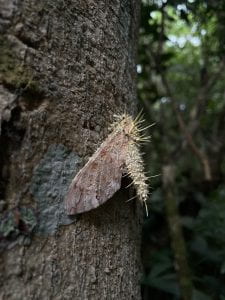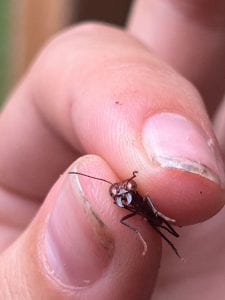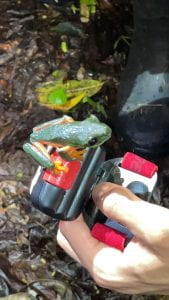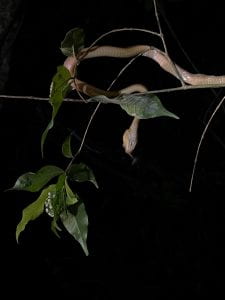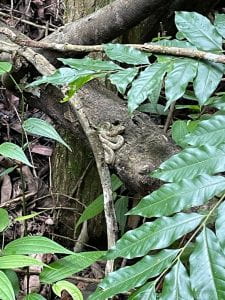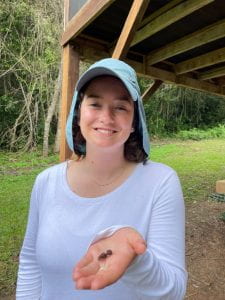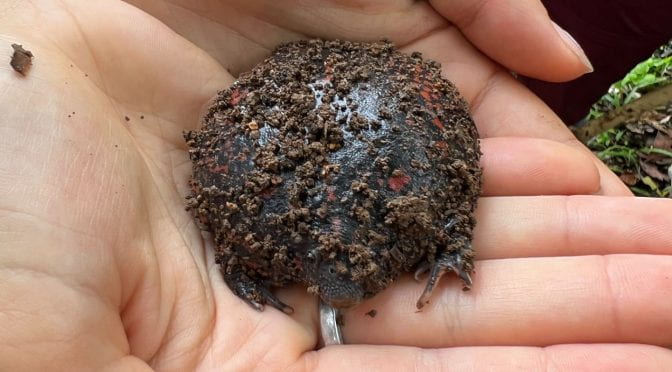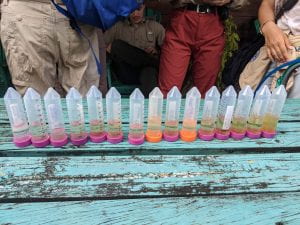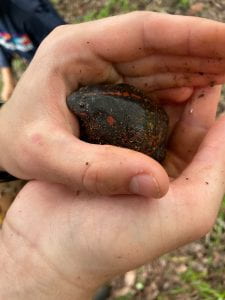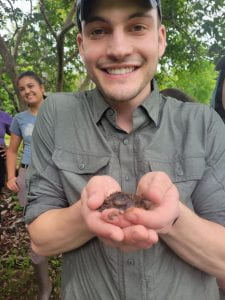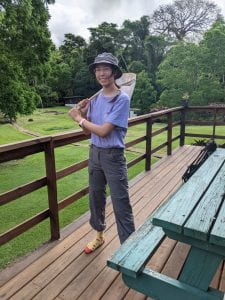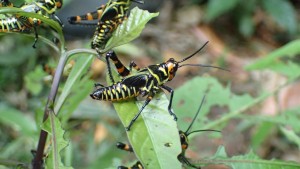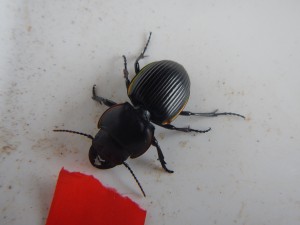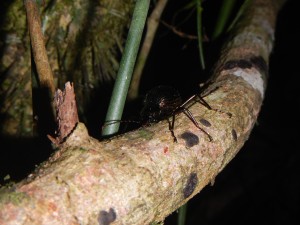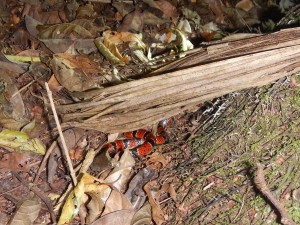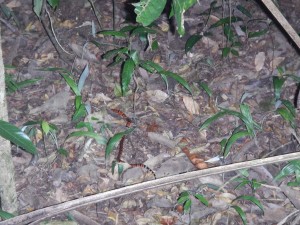Two true TFB experiences today: I woke up at 5am to join some of the group for some bird watching and peed in a test tube. Waking up was a little rough at first but it was worth it. It was super cool to see the morning mist around the fog and drink coffee while watching the Black Vultures hang out on their canopy spot. The dawn chorus was also super pretty (where all of the birds sing in the morning) and looking out into the trees while waking up was pretty peaceful. I also got some people to start throwing around a frisbee !! But I promise ultimate ishn’t my main personality trait… After breakfast, we started our next experiment – seeing the differences of arthropod abundance in the canopy versus the forest floor. One way to test this is by placing a pitfall trap with nitrogen in it and a water in the other one. How do you get the nitrogen source into the pitfall? Our pee.
For the rest of the morning before lunch we set up our 64 pitfall traps on the tree and in the forest floor. I spotted some Mistletoe Cactus (an epiphyte) too! And of course lots of Tillandsia spp., Monstera spp., and Philodendron radiatum and hederacum. As soon as we got on the trail to set up, we came across a Jumping Pit Viper and an Eyelash Viper. Apparently the manager of the station hasn’t seen on in the wild in the past 12 years and it’s insane that we were able to find one. Then after lunch, we got to excavate some Leaf Cutter Ant nests to try to find their fungal garden looking at young ones first and then old ones. While searching for the nests and prepping for the excavation we saw a Tarantula Hawk, scorpions, a Orb-Weaver Spider, and Ant Lion holes. When we looked through the young one, we were able to find the queen which was absolutely giant – she can live up to 25 years and has a bunch of eggs that she lays over time after only mating once. Two kinds of worker ants that work as a defense layer are called Majors and Soldiers. These have huge heads that have really sharp mandibles and do not hesitate to bite you and draw blood. While looking at the first of the two bigger nests, we found a rare (to find) Mexican Burrowing Toad which was SO cute and funny looking. A big highlight of the day was seeing a super happy and excited Rusty. Looking at the second of the larger nests, there was many more major and soldier ants, and a much larger fungal garden and we got to see the architecture of the nest more.
After dinner, as we got to go on an optional night hike which was definitely 100% 12/10 worth doing, I almost stopped on a Red-Rump Tarantula. I really think my clumsiness has amplified 10 fold over the past week and a half. As we walked through the trail, it really felt like we were on the set of a movie with the way our headlamp moved across the towering palms. We encountered two (!!) Morelet’s Tree Frogs which is a critically endangered species which is tragic as these guys are super cute. They even jumped on some people and we had a fun tree frog photoshoot. As we made it to the same wallow as yesterday, we saw that the same Red-Eyed Tree Frog (possibly Morelet’s as well) eggs where being preyed upon by a Northern Cat Eye snake. We actually got to watch the snake’s process of stalking the eggs slowly and taking multiple trips to get as many eggs as possible. It was super cool to be able to observe behaviors of the more nocturnal organisms and basically unlock another world.
-Sophia
